Hello! I’ve found that I don’t have a tutorial for this technique I use in a pattern I’m currently updating. Hope this one will help you!
You may know well and often use the long-tail cast-on. This is also my favorite one for its simplicity and versatility, and I think it’s because I learned it as a child. When I picked up knitting as an adult and learned cast-on techniques, this one went really smoothly, as if I got back to the bicycle after long years of pause and my hands knew how to do it.
It has a very weak point however – the first row to work is a wrong side row! I don’t mind starting a project with a wrong side row now that I’m a seasoned knitter, but I didn’t like it when I was a beginner. The first row, the most difficult and the trickiest one in my opinion even with experience, with purl stitches!! And the long-tail PURL cast-on comes into play there. Instead of making knit stitches on your needle (because that’s what you do with the classic long-tail cast-on), this technique gives purl stitches and you can start your projects with a right side, knit row! You can also use it for the patterns that start with a right side row and that don’t specify which technique to use for casting-on, without having those purl bumps at the cast-on edge.
Hooked? Here we go.
To start, we need to have a long tail, about 3.5 to 4 times longer than the width of the cast-on edge, instead of 3 times for the “classic” long-tail method. I suppose this is because we create purl sts which generally need more yarn than knit stitches.
1. Make a knot and place it onto your needle.
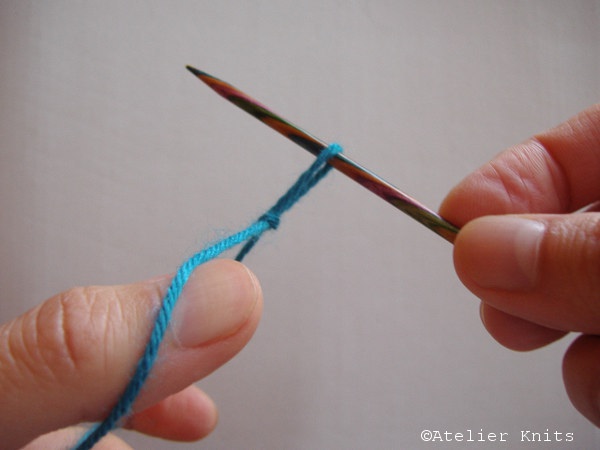
N.B. Those are pictures taken long ago when I was Atelier Knits’ owener.
2. Take the sling shot position as for the classic long-tail cast-on, with the tail on your thumb and the yarn coming from your ball of yarn on your index.
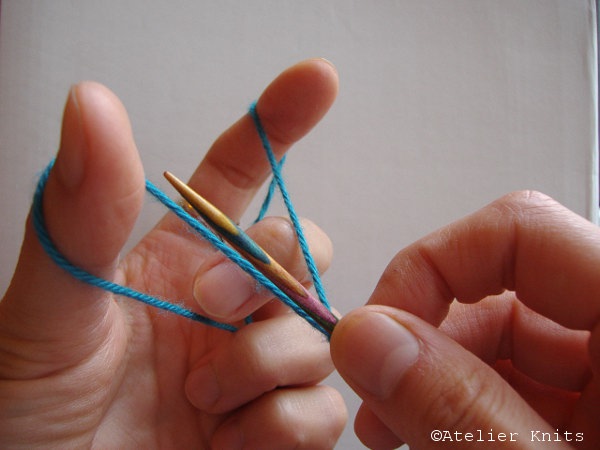
Then, we are going to do exactly the opposite of the classic long-tail.
3. Scoop the back-side loop on your index.
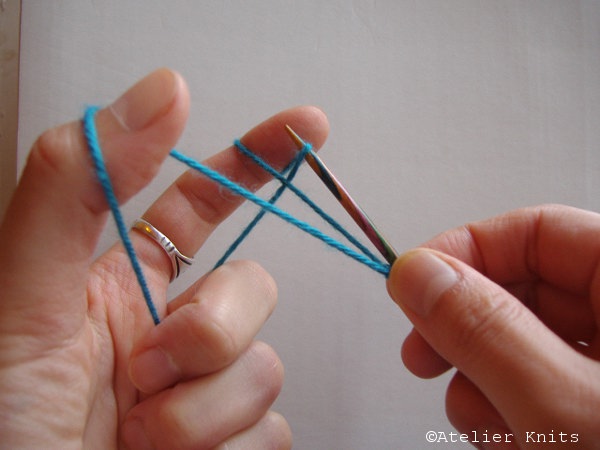
4. Scoop the back-side loop on your thumb.
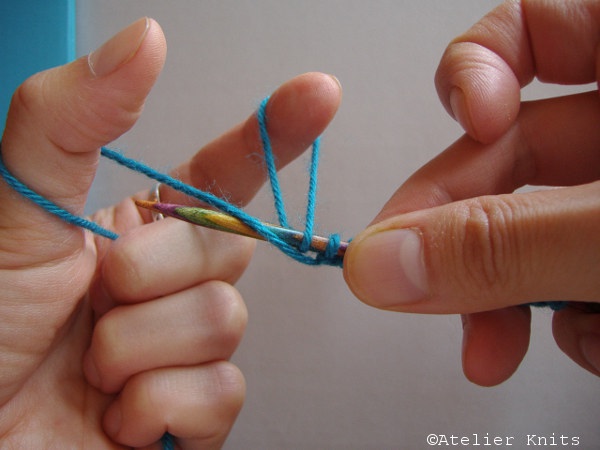
5. Pass the needle through the loop on the index, then release the loop off the index, as you do with the loop on the thumb with the classic long-tail.
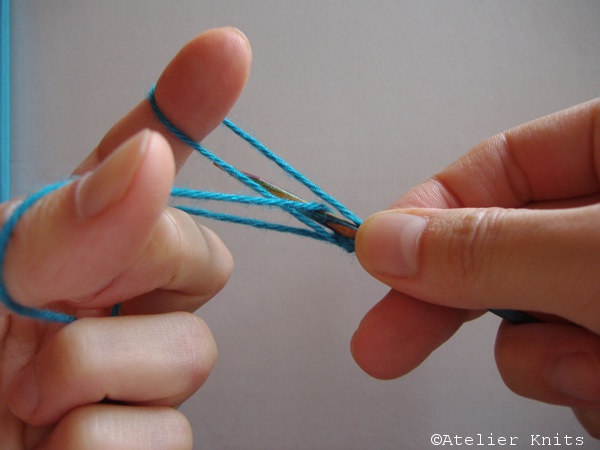
6. You can see that a stitch is being formed. Move your index to the slingshot position, which tightens the stitch on your needle.
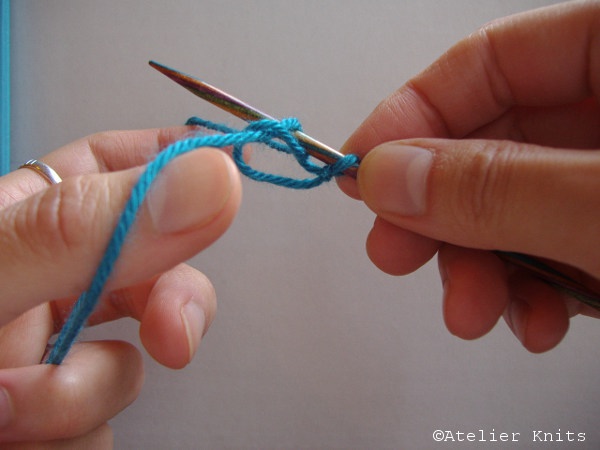
Then, repeat Steps 3 to 6 until getting the number of stitches needed.
Here I finished casting on stitches and we have purls on the needle.

Turning your work, you can start to work a knit row!
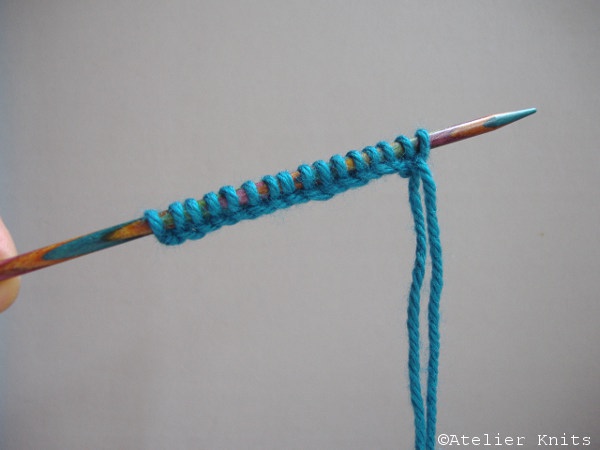
Do you find this post helpful? Please consider supporting me if you want to read more helpful posts. Thank you 💜
![]()
